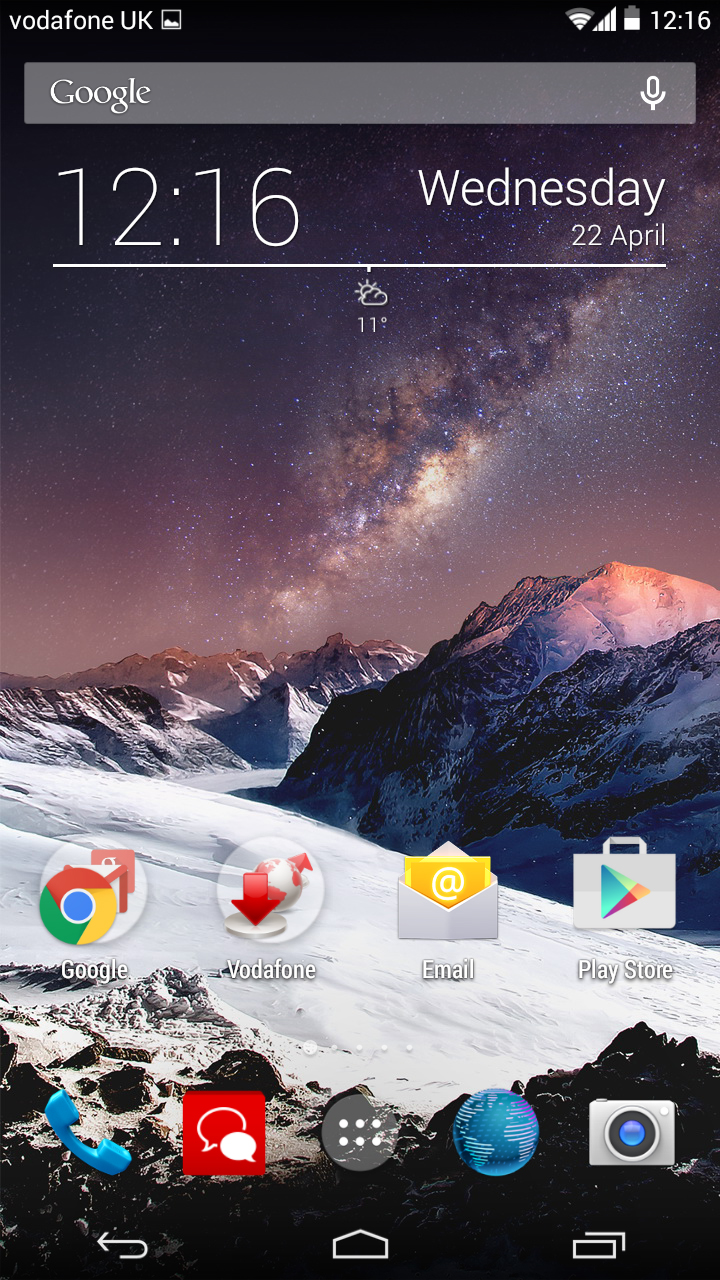Why you can trust TechRadar
While the Vodafone Smart 4 Max has a number of impressive components for the money, it isn't a very strong performer in general terms.
It runs on a fairly competent (if low-end) 1.2GHz quad-core Snapdragon 400 CPU with 1GB of RAM, but I experienced noticeable stutters in general navigation, and particularly whilst updating multiple apps in the background.
Whilst trying to play the downloaded 720p video file for the standard TechRadar battery test shortly after switching the phone on from a night on charge, it stuttered repeatedly while several apps updated in the background.
This sluggish performance extended to games, where even a simple (albeit pacy) 2D platformer such as Mikey Boots couldn't maintain a fluid, consistent frame rate.

Perhaps surprisingly, 3D racer Real Racing 3 performed adequately – albeit evidently on the automatic low-detail settings.
In our GeekBench 3 tests, a multi-core score of 1145 places the Smart 4 Max in the same kind of territory as its older, smaller brother, the Vodafone Smart 4 Power. Slightly below, in fact. It's also below the score of the EE Kestrel, another smaller and seemingly less capable device from Vodafone's main UK rival.
This would appear to be a side-effect of the Smart 4 Max's 720p display, which highlights an apparent predicament. The phone's display resolution isn't sharp enough for the screen size, but it seems to be a little too sharp for the engine (CPU and RAM) that drives it.
Sign up for breaking news, reviews, opinion, top tech deals, and more.

Going back to that point about the interface, the Vodafone Smart 4 Max runs on a stock version of Android – but an out-of-date one. Android 4.4.4 KitKat has been superseded by Android 5.0 Lollipop, so it's a shame that Vodafone didn't make an effort to ship its latest phone with this.
Perhaps Google's much-documented Lollipop software gremlins (which Android 5.1 largely addresses) made such a move impossible, but given the software's stock nature, we would have hoped for a swift update from Vodafone.

It's a shame that Vodafone didn't take some steps to tweak the software for its super-sized device, however. In particular, I really missed the ability to wake the screen with a double tap – something that feels especially useful in less wieldy devices such as this.
In fact, Vodafone has been relatively (perhaps mercifully) hands-off in its treatment of the stock Android OS.
There are a couple of easily removable homescreen widgets – one pushing Vodafone service news, another offering help and tips – and a fairly benign Smart Touch function that has to be activated from the drop-down settings menu.
Smart Touch effectively places an ever-present floating control on the screen that, when held, brings up a radial menu of shortcut functions. These include media player controls, a camera shortcut, and space for some customisable favourites.
I didn't feel the need to use it too much, in truth, but perhaps that's through my own habitual Android use. At the very least, it's another possible aid to single-handed usage on this vast phone.
Battery life
The Vodafone Smart 4 Max comes with a decent-sized 3000mAh battery, which seems to be ample given the lower resolution of its 6-inch display. The similarly proportioned Nexus 6, for example, has a whopping QHD resolution, yet has only a slightly larger 3220mAh battery.
When applying the standard TechRadar battery test, which involves a 90-minute 720p video, with the screen brightness set to full, I was left with 80% battery life on average.

That's a pretty decent result, placing it just shy of such diverse devices as the ZTE Blade S6 and the Samsung Galaxy S5.
When it comes to the day-to-day business of actually using the phone, it shows impressive stamina. I was able to clear a full day (as in, 24 hours) of light usage with just half of a full charge.
While it wasn't my most intensive day of usage, it did include such power-sapping tasks as a 90-minute 720p video (the aforementioned battery test), a 35-minute phone call, and a 10-minute session of Blocky Roads.
That's pretty impressive any way you cut it, and it's clearly a result of that low-res display, combined with that large battery – not to mention that faithful old power-sipper, the Snapdragon 400 CPU.
The TechRadar hive mind. The Megazord. The Voltron. When our powers combine, we become 'TECHRADAR STAFF'. You'll usually see this author name when the entire team has collaborated on a project or an article, whether that's a run-down ranking of our favorite Marvel films, or a round-up of all the coolest things we've collectively seen at annual tech shows like CES and MWC. We are one.
